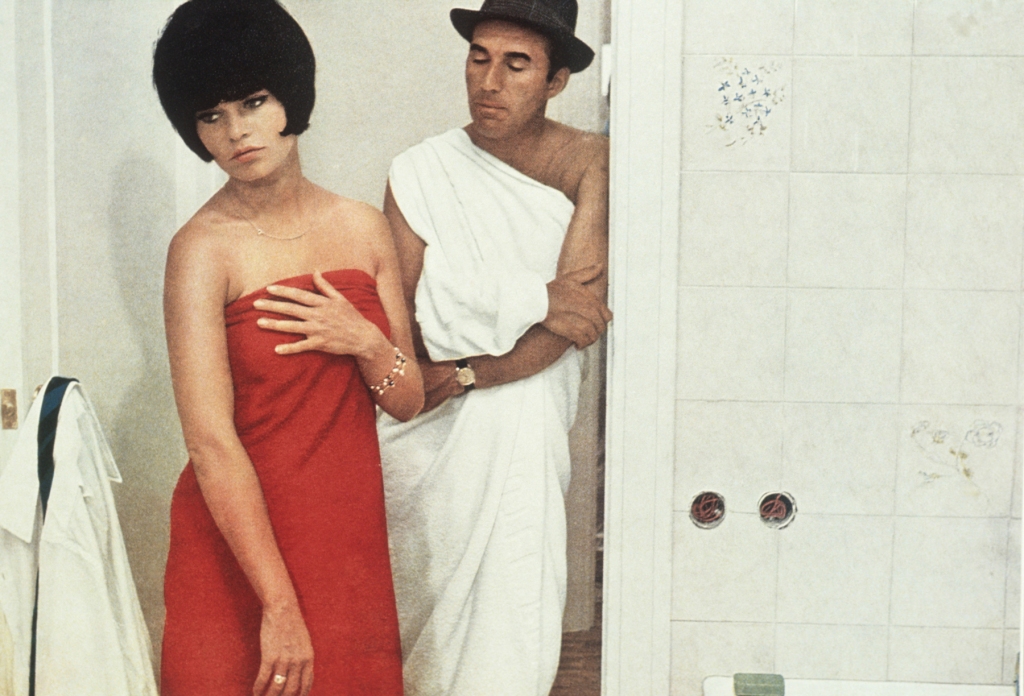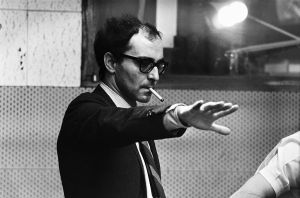The inarguably true cliché about Jean-Luc Godard was that the late filmmaker, who died this week at the age of 91, was a rule-breaker, an artist whose style changed the course of film history by revealing the medium for everything it had already been and pointing to the future of what it could eventually be. Obviously, his body of work has been influential — but that’s an understatement.
And not only for his extensive, time- and media-spanning filmography, ranging from his cucumber-cool debut, Breathless, to the didactic political experiments of the 1960s and 1970s, the encyclopedic, argumentative video essays, the playful outings merging pop stylishness with withering capitalist critique, Shakespeare with Chernobyl — and on and on. It was the kind of career, so large and encompassing, that could be broken down into distinct periods, each with its own cadre of devoted champions, detractors, experts. Still, the films are only part of the story.
His criticism for Cahiers du Cinéma, written in his relative youth alongside his fellow titans of the French New Wave, mattered, too. Their collective defenses of now-acknowledged geniuses like Howard Hawks, Alfred Hitchcock, Frank Tashlin (Will Success Spoil Rock Hunter?), Nicholas Ray (Johnny Guitar), Orson Welles, and others — this is another list that could go on for some time — has played no small part in cementing those filmmakers’ canonical status today. Perhaps Godard and crew are to thank (or blame) for the fact that we now spend so much time debating the meaning and value of the “auteur” on the internet, deifying or skeptically denouncing a concept that’s far easier to take for granted now than it was in the heyday of Godard’s youth, when the status of the filmmaker as an artist still needed to be argued for.
When Godard and his peers began to make their own films, the world was able to see their vibrant, impish, polemical ideas about film put into action. They argued that cinema — with all of its financial, creative, practical and interpersonal contingencies — was an art form, despite the machines of Hollywood and the like laboring to suggest otherwise. Then they did the damndest thing: They proved it. There isn’t any rule that a serious student of film has to like Godard’s films, or even “get” Godard’s films. But, it’s ideas like these that make it urgent, still, to contend with his body of work — even (or especially) when it wants to repel us.

Everett Collection
What’s generative is the chance to play detective, to try and figure out what it is that Godard’s films are doing or not doing, saying or not saying, that’s so mesmerizing and galvanizing — or boring and confusing! Every encounter with Godard’s work is an opportunity to ask ourselves how we got here, whether we’re asking it alongside a filmmaker whose political films feel like the laboring of someone trying to design some ingenious new language to better explain the world to itself, or we’re asking it of the movies themselves, which can make us feel things we didn’t expect to feel — even when they seem to escape our immediate comprehension.
A Woman Is a Woman (1961), the second of his features to be released (after the censoring and delay of his actual second feature, Le Petit Soldat) was the project that allowed Godard to approach the big-tent, colorful, ostentatiously bubbly genre of the MGM musical with the same wry, playfully deconstructive attitude he’d taken toward Poverty Row B-movies with his debut feature, Breathless. It’s the kind of film that makes forces audiences to see how often we take Hollywood’s style for granted, how much we’ve been encouraged to accept certain forms of artifice as a given.
It’s a “musical,” with comically jaunty music by Michel Legrand, an iconically hot trio of stars (Godard standby Jean-Paul Belmondo, his then-wife Anna Karina, and the great New Wave actor Jean-Claude Brialy) navigating a ridiculous pregnancy plot, expansive and colorful images courtesy of Cinemascope, and other seeming hallmarks of the genre. Only, the sound — both the music and the dialogue — cut in and out. Legrand’s score plays like a relentless punchline machine — intruding, interjecting, shaping scenes instead of accompanying them. The actors play into the farce of it all, breaking the fourth wall and heightening the private, domestic lives of their characters with an overabundance of spectacle and performance. It’s as if the characters are living their fantasies out loud, calling attention to the sensational artifice and compulsive fantasy mongering of the genre that they’re not quite spoofing.
A Woman Is a Woman is not Godard’s most renowned movie, nor his best. But, I’ll never forget seeing it for the first time and feeling like I was being pushed to notice movies — with all their contrived, ingenious delights and ridiculously artificial sensations — for the first time, encouraged to keep looking on in awe while also being challenged to step back from that awe in order to begin asking questions. His later films, which are widely thought to be more obtuse, do much the same, only with a more immediate, jarring sense that the history of images is a political history — and that in taking that history seriously, those images have to be corrupted, reoriented, and broken apart from the inside.
There’s a reason why similarly self-reflexive and feverishly stylistic directors have spoken on the record about what they owe to Godard. Quentin Tarantino once admitted that he’d “outgrown” Godard — and because Tarantino was an acknowledged acolyte who’d gone so far as to name his production company, A Band Apart, after one of Godard’s films, the remark was mistaken for a slight. What Tarantino seemed to mean was that Godard’s work had already done its job, freeing him up to pursue his own style — which, like some (and only some) of Godard’s work, is a style that looks backwards, toward the director’s cinematic loves, in order to move forward.
Tarantino’s comments mirror what much of the public would eventually think about Godard — people for whom the filmmaker’s career seems to drop off in the late 1960s, after his early run of canonically agreed-upon masterpieces (Breathless, Weekend, Contempt) only to maybe (maybe) resume in the 1980s, and maybe continue into the present. It’s true that Godard’s late career was difficult, less concerned with revising the films Godard had loved than with bending the form toward the most individually visionary extremes. Still, we must notice the irony of the mainstream opinion toward Godard’s work, which had previously valued his canon for its iconoclasm, splintering more and more the further he delved into unconventionality. That isn’t a mark against the work, of course — it’s quite the opposite. Godard’s ability to beguile us anew with each subsequent phase of his living body of work is part of what makes it so valuable, so worthy of the challenge of exploring that work and, even more, worthy of our right to challenge it back. Few artists are so timeless. How can you outgrow that?

